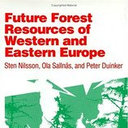Promising long-term health-related quality of life after high-dose-rate brachytherapy boost for localized prostate cancer.
Palavras-chave
Resumo
OBJECTIVE
To explore the long-term general and disease-specific health-related quality of life (HRQOL) >5 years after combined radiotherapy for localized prostate cancer, including a high-dose-rate brachytherapy boost and hormonal deprivation therapy.
METHODS
Of 196 eligible patients with localized prostate cancer (Stage T1-T3a) consecutively treated with curative radiotherapy at our institution between June 1998 and August 2000, 182 (93%) completed the European Organization for Research and Treatment of Cancer Quality of Life questionnaires QLQ-C30 and QLQ-PR25, including specific questions on fecal incontinence >5 years after treatment in September 2005. A comparison with age-matched normative data was done, as well as a longitudinal analysis using HRQOL data from a previous study.
RESULTS
The analysis included 158 nonrecurrent patients. Comparisons made with normative data showed that physical and role functioning were significantly better statistically and social functioning was significantly worse. Diarrhea and sleep disturbances were more pronounced and pain less pronounced than in a normal male population. The longitudinal analysis of disease-specific HRQOL showed that urinary urgency and erectile problems persisted 5 years after treatment, and nocturia and hormonally dependent symptoms had declined significantly, with a statistically significant difference. Fecal incontinence was recognized by 25% of patients, of whom 80% considered it a minor problem.
CONCLUSIONS
More than 5 years after combined radiotherapy, irritative urinary problems and erectile dysfunction remain concerns, although severe bowel disturbance and fecal incontinence seem to be minor problems. Longitudinally, a decline mainly in hormonally dependent symptoms was seen. Minor differences in general HRQOL compared with normative data were observed, possibly including "response shift" effects.


